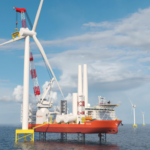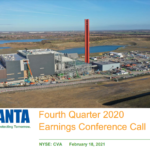Convertible Solar Bonds: Trina, SunPower Stoke Fire; Ascent Descends
by Sean Kidney Trina’s $150m 3.5% 5yr convertible solar bond In June Chinese solar manufacturer Trina announced the private placement of $150m of 5 year, 3.5% convertible bonds to “institutional investors” (no details provided). Trina weren’t clear how they would use the proceeds, but they are planning to build 400-500MW of solar plants over the rest of this year. Book-runners were Deutsche Bank, Barclays, J.P. Morgan and Goldman Sachs (Asia), with co-manager HSBC. SunPower issues $400m 7yr 0.875% (!) convertible solar bond That same month SunPower announced a private placement of $400 million, 7 year, 0.875% senior convertible bonds. What...
Green Bonds: 2015 Year End Review
by the Climate Bonds Team Another successful year for the green bond market with 2015 issuance hitting $41.8bn making it the biggest year ever for green bonds. Achieving scale hasn’t been the only reason to celebrate the green bond market at the year-end; the real success is the geographical spread of green bonds across the world. Green bond markets are popping up all across the world, in Brazil, China, Estonia, Mexico and India… just to name a few! Green bond market momentum continues to build after a successful COP in Paris. ...
The Pros Pick Three Green Income Stocks For 2014
It’s now possible to invest in green stocks for income, not just for growth. Here are three picks for 2014 from green investing professionals.
Is Suzlon’s $650m Wind Bond the First of Many?
India had been trying to get a corporate bond market going for 15 years – search “growing India corporate bonds” and you’ll find papers on the subject from the Reserve Bank of India, Bank of International Settlement and others scattered over past years. The latest Indian 5 year plan has this as a priority – and has green finance as a priority in a separate section. India has a particular need: a miniscule local corporate bond market means restricted financing options for business, including for renewable and energy efficient building developers – diversity with financing options helps drive down costs...
Five Pioneers Mining the Sun for Income
by Jared Wiedmeyer For the past few years, solar industry stakeholders have imagined a future where the general public has the ability to invest in pure-play renewable energy real estate investment trusts (REITs) that finance and construct both utility-scale and distributed photovoltaic (PV) projects in the United States. While these stakeholders wait for this reality to come to fruition, existing REITs already have several options to own or develop solar projects that still allow them to comply with the IRS's asset and income tests. This past May, Chadbourne & Park's Kelly Kogan and Scott Bank moderated a roundtable with...
Buffet Bet Comes Out for Solar
by Sean Kidney Warren Buffet is a famous proponent of value investing and he surely received a sign of the value in solar investments over fossil fuels last week. The MidAmerican Energy $850m Topaz solar project bond we mentioned a couple of weeks ago was so successful that a second tranche is expected to cover the remaining debt of the project. The offer was oversubscribed by $400m which would have mopped up the total $1.2bn of debt in the project; Buffet's Berkshire Hathaway (BRK-A) controls MidAmerican. In contrast, Buffet’s investment in $2bn of bonds from gas company...
Eneti and Brookfield Renewable Earnings
By Tom Konrad, Ph.D. CFA
Here are a couple earnings notes I shared last week with my Patreon followers.
Eneti, Inc. (NETI) - formerly Scorpio Bulkers (SALT)
Eneti completed its name and ticker change on February 8th. New ticker is NETI (formerly Scorpio Bulkers (SALT), which I recently wrote about here.
Highlights from February 2nd earnings report:
37 of the 47 vessels owned at the 3rd quarter have been sold or have completed sale agreements.
Net asset value is $23.94/share. Since most assets are cash or vessels held for sale, this number is basically accurate.
The stock is still a good buy...
Capstone Infrastructure: Green Income At A Cardinal Discount
Tom Konrad CFA Capstone Infrastructure Corp.'s Gas Cogeneration facility in Cardinal, Ontario. Capstone Infrastructure Corporation (TSX:CSE, OTC:MCQPF. Disclosure: I own this stock) is an international operator and developer of green infrastructure assets and utilities which is currently selling at a significant discount to most comparable firms. I recently ran a comparison of six similar Canada-listed firms, and Capstone seemed much cheaper on several measures. The Discount The following chart compares five renewable energy and green infrastructure firms with most of their operations in Canada: Capstone, Algonquin Power and Utilities (TSX:AQN, OTC:AQUNF), Brookfield Renewable Energy Partners (NYSE:BEP),...
Will Investors Flock to SunEdison’s Emerging-Market YieldCo?
by Tom Konrad CFA SunEdison is proposing something entirely new: a YieldCo with a focus on projects in Africa and Asia, but it's a long way between an S-1 filing with the SEC and and IPO. The June launch of SunEdison's (SUNE) first YieldCo, TerraForm Power (NASD:TERP), transformed the parent company's prospects. Now it wants to repeat the performance with a first-of-its kind YieldCo that will focus on investment in Africa and Asia. A YieldCo is a publicly traded company that is formed to own operating clean energy assets that produce a steady cash flow,...
Vornado Realty Green Bond Boosts US Market, But Lacks Ambition
By Bridget Boulle and Rozalia Walencik Last week BBB-rated Vornado Realty (NYSE:VNO) became the second US real estate investment trust to issue a corporate green bond, following the Regency Centres (NYSE:REG) bond late last month. The 5 year, $450 million bond was structured by Bank of America Merrill Lynch. Pricing was in line with non-green bonds. Investors included asset managers, pension funds, insurance companies and governments, of which some were regular investors and others had a specific green interest. Some non-US investors also came in. According to the prospectus, the proceeds will be used to fund buildings and retrofits...
Comparative Valuation of 15 Yieldcos
Tom Konrad CFA Compared to the peak of the Yieldco bubble in May, many Yieldcos have dropped by more than half, and most by more than a third. Some of this decline is because rapid dividend growth depends on an endless supply of cheap investor capital which is another way of saying that we can have rapid dividend growth or high dividend yields, but not both. Part of the decline was due to the realization that many Yeildcos (most notably Terraform Power (TERP), Terraform Global (GLBL), and Abengoa Yield (ABY)) were not immune to...
Four Clean Green Dividends
by Debra Fiakas CFA The recent pullback in stock prices in the U.S. equity market has opened the door to some interesting dividend yields. Investors with a taste for environmentally-friendly businesses have some particularly interesting alternatives that can pump up the purse as well as protect Mother Earth. AES Corporation (AES: NYSE) is a world-class power generator from mixed portfolio of conventional and renewable power sources. About 28% of its 29,352 megawatts of generation capacity is from renewable fuel sources, including hydro, biomass, solar and wind, and another 33% from plants using natural gas. The balance of...
Christmas Climate Bond From Hannon Armstrong
Sean Kidney Out Monday: a very interesting bond from US listed sustainable infrastructure investor, Hannon Armstrong Sustainable Infrastructure (NYSE:HASI): a $100 million asset-backed securitization of cash flows from over 100 individual wind, solar and energy efficiency installations, all with investment grade obligors. They’re calling them “Sustainable Yield Bonds”; Climate Bonds for us. Coupon is 2.79%. This first bond was privately placed - but they’re planning lots more. Hannon Armstrong have taken the high ground on emissions and built in quantitative annual reporting of greenhouse gas emission reductions, measured in metric tons per $1,000 of par value. The assets...
Royalties: a Financial Innovation for Renewable Energy
The following interview with RE Royalties (RE.V, RROYF) CEO Bernard Tan was conducted in September by AltEnergyStocks.com Editor Tom Konrad. Links and ticker symbols were not included in his original responses, but added by AltEnergyStocks.com as a resource for readers.
Q: What exactly is a renewable energy royalty?
A renewable energy royalty is a stream of cash flows generated by a renewable energy project. When the project generates electricity and sells its electricity, we receive a percentage of the revenues from the electricity sales, otherwise known as a gross revenue royalty. We receive that gross revenue royalty, on average, for about...
Recent Green Bonds: Toyota Hybrids, SunRun, Efficient Homes and Data Centers
by the Climate Bonds Team Last month Toyota closed their second green bond for a whopping $1.25bn. Standard auto loans backed the issuance with proceeds to be used for electric and hybrid car loans; that means it’s more like a corporate green bond, where proceeds from a bond backed by existing (non-green) assets are directed green loans still to be made. Sunrun issued $111m of solar ABS, and a small unlabelled energy efficiency ABS was also issued by Renew Financial and Citi for $12.58m. Sunrun and Citi/Renew Financial are examples of ABS where the assets backing the issuance...
Covanta and Hannon Armstrong Earnings
by Tom Konrad, Ph.D. CFA
Two more earnings notes I shared with my Patreon followers on February 18th.
Covanta Holdings (CVA)
Leading waste-to-energy firm Covanta Holdings (CVA) announced 2020 earnings today. There will be a conference call tomorrow morning, but here is my high-level impression:
The company managed well through Covid and ended the year within it's original pre-covid guidance. Metals and energy prices, as well as increased maintenance capital expenditures were a drag on results, but prices are improving and capital expenditures will fall in 2021.
The company is conducting a strategic review which will likely result in the sale of some underperforming...





